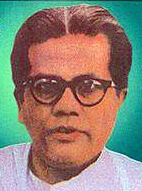Introduction
Kanaklata Barua was a fearless young woman who played a significant role in India’s freedom movement. She is remembered for her sacrifice during the Quit India Movement in 1942, where she laid down her life while attempting to hoist the national flag at Gohpur Police Station. Her courage and patriotism continue to inspire generations.
Early Life of Kanaklata Barua
Born on December 22, 1924, in Barangabari, Assam, Kanaklata grew up in a conservative household known as the Dolakasharia family. Life was not easy for her—she lost both her parents at a very young age, which forced her to take on responsibilities beyond her years. Despite her hardships, she developed a strong sense of duty toward her country.
Kanaklata’s Role in the Freedom Movement
During the Quit India Movement of 1942, Assam became a hub of resistance against British rule. Inspired by Mahatma Gandhi’s call for non-violent struggle, local leaders in Assam, including Jonaram Bhuyan, Jiten Borah, Mukunda Kakaty, and Karneswar Hazarika, mobilized people from different regions to protest against the British authorities.
Kanaklata, an 18-year-old village girl, decided to join the Mrityu Bahini (Death Squad), a volunteer force formed to hoist the Indian national flag at Gohpur Police Station. Without informing her family, she enlisted herself in the movement, knowing very well that it could cost her life.
The Historic Protest of September 20, 1942
On the morning of September 20, 1942, Kanaklata completed her household chores and bid farewell to her younger siblings, expressing uncertainty about her return. She then joined a large group of volunteers at Barangabari Chariali, where men and women, standing in two separate lines, marched towards Gohpur Police Station, located about 12 kilometers away.
With the Indian tricolor held high, Kanaklata led the group of women volunteers. Their goal was to peacefully hoist the flag at the police station, demonstrating their demand for independence. As they marched, they chanted patriotic slogans such as:
- “British imperialists, leave India!”
- “Freedom is our birthright!”
- “Do or die!”
The Brave Stand Against the British Police
As the protestors neared Gohpur Police Station, they were intercepted by British armed forces led by officer R.M. Sunia. The police warned them not to enter the station, but Kanaklata refused to step back. When asked to move behind the male volunteers for safety, she boldly declared that women were just as capable of sacrificing their lives for the nation.
Kanaklata stepped forward with unwavering determination, addressing the policemen and stating that they had come to peacefully hoist the national flag, following Mahatma Gandhi’s principles of non-violence. However, the British authorities showed no mercy. As Kanaklata advanced with the flag, a constable named Gogal Chipahi fired a bullet at her. She collapsed on the spot, sacrificing her life for the country.
Another volunteer, Mukunda Kakaty, was also shot, sustaining severe injuries. He later succumbed to his wounds at 8 PM the same day. Despite the brutal attack, the spirit of the protestors remained unshaken. Later that evening, a volunteer named Rampati Rajkhowa managed to hoist the national flag at Gohpur Police Station, fulfilling Kanaklata’s mission.
Kanaklata Barua’s Legacy
Kanaklata’s body was taken back to her village and cremated on her own land. Her sacrifice left a lasting impact, and she is often compared to historical warriors like Rani Lakshmibai of Jhansi and Joan of Arc of France for her bravery.
Even though Kanaklata is no longer with us, her story continues to inspire thousands of Indians, especially young women. Her courage proved that age and gender are no barriers to patriotism and sacrifice.
Remembering Kanaklata Barua
Over the years, various tributes have been paid to honor Kanaklata’s legacy:
- Kanaklata Barua Award – Recognizing contributions of women in Assam.
- INS Kanaklata Barua – An Indian Navy fast attack craft named in her honor.
- Statues and Memorials – Several statues have been erected in Assam to commemorate her sacrifice.
Conclusion
Kanaklata Barua’s life was short but meaningful. She stood firm in the face of oppression and gave up her life for India’s freedom. Her fearless spirit continues to remind us of the power of determination and the sacrifices made by countless unsung heroes in the struggle for independence.
Let us always remember and honor the courage of this young martyr, who proved that true patriotism knows no age or boundaries.
FAQ’s:
Q 1. Who was Kanaklata Barua, and why is she remembered?
Kanaklata Barua was a young freedom fighter from Assam who played a crucial role in the Quit India Movement. She is remembered for her bravery in leading a protest to hoist the Indian national flag at the Gohpur Police Station in 1942. She was shot and killed by British police while carrying out this act of defiance.
Q 2. Where was Kanaklata Barua born?
She was born on December 22, 1924, in Barangabari village under Gohpur Police Station, in present-day Sonitpur district of Assam. She came from a conservative family but had a deep sense of patriotism from a young age.
Q 3. What was her role in the Quit India Movement?
Kanaklata Barua was one of the leaders of a volunteer group that planned to hoist the Indian flag at the British-controlled Gohpur Police Station. She led the protest despite knowing the risks, standing at the front of the women’s group with the flag in her hands.
Q 4. How did Kanaklata Barua die?
On September 20, 1942, Kanaklata and other protesters marched towards the police station, demanding the right to hoist the Indian flag. British police officers opened fire on the unarmed protesters, and Kanaklata was shot dead on the spot while holding the flag.
Q 5. Why did the British police shoot at the protesters?
The British colonial government considered such protests illegal and used force to suppress any movement that challenged their rule. Despite the peaceful nature of the protest, the British police saw it as a threat and fired on the demonstrators.
Q 6. Was Kanaklata Barua the only one who died in the protest?
No, along with Kanaklata, another freedom fighter, Mukunda Kakaty, was also shot and died later the same day. Several others were injured, but the protest continued, and the flag was eventually hoisted at the police station.
Q 7. What impact did her sacrifice have on the freedom movement?
Kanaklata’s courage and sacrifice became an inspiration for many in Assam and across India. Her story is a symbol of the fearless spirit of young revolutionaries who fought for India’s independence.
Q 8. Is there any memorial or recognition for Kanaklata Barua?
Yes, several institutions and places have been named in her honor, including the Kanaklata Barua Award and Kanaklata Mahila Battalion. Her legacy is also remembered in Assam through various events and educational programs.
Q 9. How is Kanaklata Barua compared to other freedom fighters?
She is often compared to Rani Lakshmibai of Jhansi and Joan of Arc because of her bravery at a young age. Like them, she chose to stand against oppression, even though she knew it could cost her life.
Q 10. What is Kanaklata Barua’s legacy today?
Her story continues to inspire young people, especially women, to be fearless in the face of injustice. Schools and history books in Assam teach about her contributions, ensuring that her bravery is never forgotten.












